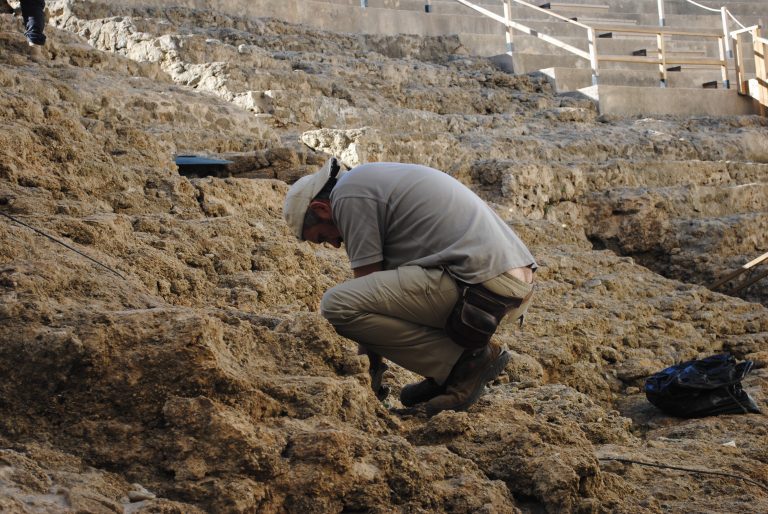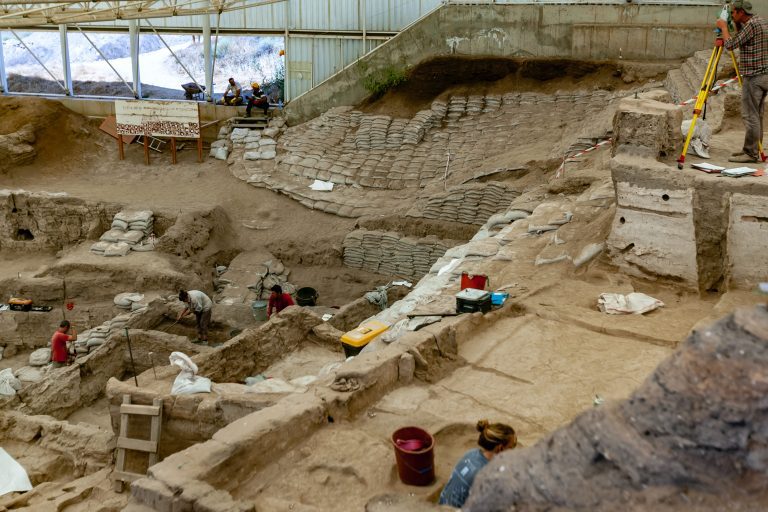Significance of Archaeology
Anthropology has been recognized as an important scientific field of study for decades, but it has been relevant ever since the 18th century. Anthropologists study the evolution of human culture by identifying and analyzing material remains, civilizations, languages, and biological processes. This field of study is important because we can use the knowledge of societies from both the past and the present to diversify and advance our own culture. There are four branches of anthropology; archaeology, biology, linguistic, and cultural. This article focuses on the impact the environment has on anthropological records, specifically for archaeology. Archaeology focuses on excavating artifacts and ecofacts and dating when they were formed in order to create a timeline of human development during different time periods. When people think of archaeology, they typically imagine the study of pottery shards, cave art, and stone tools. Although this can be accurate, the role the environment plays in archaeological records is often overlooked and deserves more appreciation. Following this introduction, I will explain the different ways nature can be used to study the past and how it is particularly helpful for archaeologists.

Photo by JR Harris
Archaeology and Pollen
For those who may not know, pollen includes the grains and dust of certain types of plants, and it is carried by the wind to help plant seeds for reproduction. The study of pollen in archaeological records is called palynology, and it is crucial to identifying the plants that were grown and consumed in various societies. Pollen can be found in sediments from the ground that have been excavated. However, it is best preserved in waterlogged conditions, such as swamps, peat bogs, lakes, and oceans. Based on the positions of pollen in these sediments, stratigraphic data can be formed to create a general timeline of the existence of different plant species. According to relative dating techniques, the lower a layer is located in the ground, the older it is.

Photo by Christoph Polatzky
Pollen is able to survive for thousands of years because its grains are very hard and sturdy since they are made up of sporopollenin. Anemophilous (wind pollinated) plants usually show up more frequently in archaeological records, while zoophilous (animal pollinated) plants appear less often. This substance isn’t just found in the ground and the air, it can also be discovered in pottery, clothes, and man-made structures. Pollen can be used to analyze the diets of people in the past, and show what species of plants they were growing and domesticating. Therefore, these grains give us insight on how people interacted with and changed the environment.
Dendrochronology
Dendrochronology, also known as tree-ring dating, is a scientific method that involves studying the growth of tree rings to determine when they were originally formed. During every growing season, a new tree ring is formed and is displayed in the stumps of trees. Tree rings are typically formed annually, so counting the amount of them can easily tell archaeologists how old they are. The variations in these rings can be used to show what the climate and weather was like throughout the years. By using cross-dating techniques, patterns of the tree rings in the wood used in older man-made structures can be studied to help determine the exact age of those structures. However, there are a couple of specific conditions that specimens must have before dendrochronological methods can be applied. Samples should have at least 100 rings, be cut radially, and have no growth abnormalities that might obstruct analysis. Tree-ring dating techniques have been proven to be quite helpful to archaeologists, climatologists, and chemists when it comes to identifying past environmental conditions and patterns

Photo by Volodymyr Hryshchenko
Archaeology and Natural Preservation
The likelihood of an artifact surviving not only depends on its material, but also depends on the environment surrounding it. Organic materials are more likely to decay than inorganic materials, but certain natural conditions can preserve artifacts better than others. Very warm and cold landscapes have a similar effect to each other when it comes to artifact preservation. Since they are both low in humidity, they effectively dry out artifacts and kill the bacteria that might be formed in wetter conditions. A combination of hot and dry climates have been proven to be the most effective at preserving material culture due to a lack of excessive moisture. However, artifacts can often crumble in these conditions, so it is crucial for museums to monitor their humidity levels. Although preservation is most effective in drier locations, waterlogged areas have been shown to help organic and inorganic materials survive. Waterlogged environments are anaerobic, which means that they contain water but lack oxygen. This lack of oxygen also prevents harmful bacteria from growing and decaying artifacts. Peat bogs are actually a great example of how wet locations can protect organic materials. Bogs can be described as cold swamps with rich and damp soil, where plant remains have a very slow decaying process. This slow process is due to the fact that dense layers of peat form over time which cuts the flow of oxygen, effectively creating an acidic area that kills the types of fungi that normally quicken decaying. Other natural environments that weren’t previously mentioned can have an effect on artifacts as well. For example, ash from volcanic eruptions can help preserve inorganic materials, which can be seen through the discovery of Pompeii. If objects are buried deeper into the ground, then they are protected from severe weather conditions and are more likely to remain maintained.

Photo by Hulki Okan Tabak
The environment has had a major influence on archaeological records. Whether it’s through natural preservation, methods of dating, domestication, or human-environmental interactions, nature has been prevalent in material culture for thousands of years. It is important for anthropologists to utilize the information that the environment provides when it comes to learning about our past.
Sources
Hevly, Richard H. “Pollen Production, Transport and Preservation: Potentials and Limitations in Archaeological Palynology.” May 1981.
Hodge, Katherine. “Conservation: Wet and Dry Environments.” Project Archaeology, 25 June 2021, https://projectarchaeology.org/2021/06/25/conservation-wet-and-dry-environments/.
Kuniholm, Peter Ian, and James W Mayer. “Dendrochronology (Tree-Ring Dating) of Panel Paintings.”
Mason, Matthew. “Dendrochronology: What Tree Rings Tell Us About Past and Present.” EnvironmentalScience.org, https://www.environmentalscience.org/dendrochronology-tree-rings-tell-us.
Mboone. “Pollen Dating.” Real Archaeology, 23 Sept. 2018, https://pages.vassar.edu/realarchaeology/2018/09/23/pollen-dating/.
Saldan, Francesca. “Preserving the Past: Examples of Preservation Science within the Everhart’s Collection.” Everhart Museum, 3 Sept. 2020, https://everhart-museum.org/preserving-the-past-examples-of-preservation-science-within-the-everharts-collection/.
“What Is Dendrochronology.” Cornell Tree-Ring Laboratory, 2015, https://dendro.cornell.edu/whatisdendro.php.








